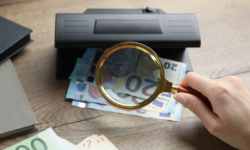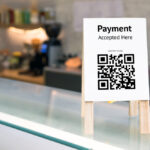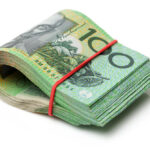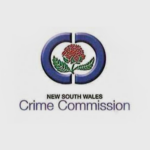The History of Currency Counterfeiting and Evolution of Counterfeiting Offences

This article is the first in a series of counterfeiting, with a different subject to be discussed in subsequent articles.
Today’s subject is on counterfeiting currency, both coinage and banknotes, notwithstanding items such as ingots and a specific sea shell called the cowrie.
All of the mentioned items have been used as currency throughout the world.
We shall endeavour to assess some of the history of counterfeiting which is regarded as the world’s second oldest profession, with prostitution reputed to be the oldest.
Commencing with the counterfeiting of coinage followed by that of paper currency, it is intended to draw an accurate picture of what is at times a contradictory and confusing synopses due to competing research and timelines, as discretely alluded to by 19th century historian Barclay V. Head.
From there we shall discuss counterfeiting as the political weapon of governments during war before moving on to several examples of countries where currency counterfeiting operations were exposed.
After this, our attention will focus on Australia in relation to counterfeiting ending with summaries of what the world is doing to combat this crime.
First global currency
Now whilst there are several claims for being one of the first proponents of counterfeit coinage, another contender for the number one claim of the earliest counterfeiting currency may be that of an earlier form of money being ‘cowrie shells’ if indeed it was counterfeited.
This currency which dates as far back as 3300 to 2000 BC was used in many parts of the world and despite being difficult to initially counterfeit imitation was achieved by use of ivory – bone and clam shells.
Such sea shells were used in other aspects too, namely as jewellery and tribal rituals. However, very little research specifically points to the conventional description attached to counterfeited cowrie shells.
There is some conjecture that some of what may be considered counterfeit cowrie shells were indeed a cheaper imitation of the shell, deliberately made to save costs and replace the real cowrie.
Economic historian Karl Polyana claimed it was impossible to counterfeit a cowrie shell.
This is supported by other studies which refer to the cowrie being very difficult to counterfeit.
So whilst one or two references to counterfeit cowries appear from time to time, on closer examination the terminology appears to confirm that imitation of the cowrie is what the studies refer to.
Just to add to what is already a confusing discussion, there were imitation bronze cowries found in the ruins of Yin, the former capital of the Shang dynasty which was around from 1500 to 1046 BC.
The exception
That is not to say that counterfeit cowries did not exist, it is simply that there appears no cogent research to say they were, apart from perhaps one significant occasion in history.
At worst, if there were counterfeit cowries, an example of this is a 2013 study of cowrie money in West African trade which speaks of real cowries as being severely devalued by the importation of thousands of tons of the cheaper Zanzibar cowries (not regarded as a true cowrie).
It appears that Colonial governments encouraged the replacement of the bonafide cowries as a result of inflation. So was counterfeiting at play on such occasions or can it be discounted as such.
Commencement of coinage currency
Lydia, the ancient land of western Anatolia was a monarchy first ruled by king Manes and subsequently the legendary king Gyges and was an ancient iron age kingdom.
As a civilisation it was around from approximately 1200 BC to 546 BC. Ultimately it became a province of the Achaemenid Persian empire. It now forms part of modern-day Turkey.
Lydia is credited with being the first entity to mint gold and silver coins (known as the Lydian stater) during the reign of king Alyattes as the first conventionally recognised monetary system.
This system ultimately became an integral part of the Greek commercial revolution of the 6th century BC. It would therefore be prudent to suggest that counterfeiting commenced after the minting of such coins. Paper money had not yet been considered.
Whilst it appears that the first minted coins were a combination of gold and silver, the last monarch of Lydia king Croesus was reputed to have had them minted in either all gold or silver.
Counterfeit Lydian coins known as ‘fourrees’ were found bearing the hallmarks of the process of counterfeiting coins at that time.
Further claims of being the first come thick and fast with according to the Reserve Bank of Australia (RBA) around 400 BC Greek coins were being frequently counterfeited.
It may be more prudent to say counterfeit commenced immediately after currency was minted and subsequently also printed.
Another claim of one of the first coinage counterfeiters is said to have occurred in the 5th century by Alexander the barber during the reign of the Byzantine empire by emperor Justinian. The empire at that time covered what is now Italy, Greece and Turkey including portions of North Africa and the Middle East.
Although with other claims going much further back in time, perhaps Alexander the barber’s claim is that he was one of the first famous counterfeiters of coinage.
Commencement of paper money counterfeiting
This first paragraph refers to what is neither coinage nor paper notes but is necessary for the sake of completeness.
The first non-paper promissory note was issued by China during the Han dynasty in 118 BC and was made of leather.
Again, although there is a further claim from Carthage (now a part of present-day Tunisia) where it is purported that prior to 146 BC bank notes on parchment or leather were issued.
Nearing the end of the 10th century amongst the first to produce paper currency was China during the Song dynasty (960-1279 CE) which was known as ‘jiaozi’.
Despite the penalty for conviction of counterfeiting being death the prevalence of this offence increased.
There were many claims of being the first instances of counterfeiting actual banknotes.
However, the first currency note which appeared in the 11th century was in fact a promissory note issued to replace what were heavy coins.
Further research attribute the issuance of paper money in the 7th century by the Tang dynasty – 618-907 but qualify this in a rather confusing manner by referring to ‘real paper currency being issued in the 11th century by the Song dynasty’ (apparently as the Tang dynasty paper currency mentioned was not quite a note as such but a form of receipt).
Governments involved in counterfeiting
A political weapon is how governments describe their criminality of counterfeiting. International currency was counterfeited by the British government during the American war of independence (1775 – 1783) and was distributed throughout the British Empire’s colonies.
This was done in an effort to devalue the currency.
Britain in turn during the second world war became the victim of two counterfeiting operations (Operations Andreas and Bernhard) in which British currency was used to purchase material to further the German war effort. Although the original plan was to drop counterfeit British pound notes on The British Isles to create hyperinflation.
Operation Andreas was the precursor to operation Bernhard which was involved in sourcing materials amongst other things but was closed down through internal politics.
Operation Bernhard picked up the operation and was named after the Nazi SS major Bernhard Kruger (Krueger) who instructed concentration camp inmates in a counterfeiting operation amounting to a total of 134 million British pounds worth $6 billion in today’s money.
Apparently, the operation was two-fold in that US dollars were also scheduled to be counterfeited.
Other notable mention of war time counterfeiting by governments include:
- During the 7-year war between 1756 and 1763 King Frederick 11 of Prussia with its allies were involved in counterfeiting Polish-Lithuanian currency for the purpose of weakening the Polish state. Not only that but it made a vast profit.
- Napoleon in Vienna in 1806 during France’s occupation counterfeited Austrian Banco script notes and as some studies say, counterfeited two denominations of Russian Rouble notes from 1805 to 1812. It is also suggested that he may have counterfeited British currency.
- Japan counterfeited Chinese currency in the late 1930s and 1940s only to find on one occasion in the early 1940s by the time they moved a captured printing operation to Tokyo and were ready to implement the printing of the 10 yuan note, it had devalued to the point it had no value.
Examples of large-scale counterfeiting
There are many notable examples of commercial counterfeiting operations across the globe.
United States & Canada
Acknowledged as the world’s greatest counterfeiter was a Canadian Frank Bourassa, an owner of a brake factory in Quebec who counterfeited US$250 million.
This resulted in him receiving only a small term of imprisonment in a deal with the US Secret Service which included him handing over US$200 million of the counterfeit cash.
This also involved in him providing expert advice to the US secret service and the royal Canadian mounted police (RCMP) who arrested him in 2012 with the aim of fighting the counterfeit trade.
Great Britain
2021 & 2022 saw further members of a counterfeiting currency gang convicted of the United Kingdom’s largest seizure of counterfeit currency amounting to 12 million British pounds imprisoned for a total of more than 20 years which included a member who had been imprisoned earlier.
The largest seizure it may have been, as Stephen Jory admitted in 1998 admitted to counterfeiting 50 million British 20-pound notes.
The banknotes were of such a good quality that the Bank of England was forced to change the design of the banknote.
Europe
2020 resulted in the arrest of 44 people from Italy, France and Belgium in relation to the seizure of 8 million euros by Europol, Italy’s anti-counterfeit currency unit (ACCU) of the carabinieri, France’s central office for the suppression of counterfeiting currency (OCRFM) and Belgium’s federal police.
It was calculated this was a small part of an overall counterfeiting operation involving a total of 233 million euros which also saw the authorities seize 50 properties, 10 companies, 12 vehicles, a luxury yacht and 22 bank accounts. News reports suggest it involved the Camorra, southern Italy’s mafia group.
China
2020 saw the reporting by the Ministry of Public Security (MPS) of China’s largest currency counterfeiting seizures since the founding of the People’s Republic of China in 1949, when Chinese police seized 422 million yuan worth around approximately US$59.5 million.
Australian currency pre-decimal era
The first paper money in Australia was very amateurish and prone to being easily counterfeited as they were not properly printed banknotes but simply a form of promissory note and IOUs which were sometimes simply handwritten.
Late 1800 saw the governor of the colony of NSW attempt to improve the currency however forgeries of the primitive form of money continued until 1817 when the bank of NSW (now Westpac) issued proper banknotes which worked to a certain degree. However due to the many different entities issuing currency, this form of fraud continued to be committed.
Is it any wonder that Australia had a problem with counterfeiting considering that a significant number of convicts transported to the colony of New South Wales were indeed forgers. In particular, Francis Greenway an architect who was transported to the colony of NSW in 1814 for the crime of forgery. Mr Greenway however was not responsible for any criminal offending in the colony and went on to design what are now iconic colonial buildings in Sydney.
After his death he was awarded the honour of being depicted on the $10 Australian banknote.
The Australian Notes Act 1910 stopped Australian states from issuing banknotes with the matter of all currency to be undertaken by the commonwealth treasury.
However, this did not impact on commercial banks until the government levied a fee for each issue and by 1920 all issuance of banknotes became the sole domain of the commonwealth bank (now the Reserve bank of Australia) (RBA).
And still, counterfeiting continued until the official Australian note and stamp printer encouraged the government to provide a more sophisticated banknote.
Once again despite the improvement sporadic episodes of counterfeiting continued until a spike in the mid-1950s.
This resulted in the Reserve Bank Act 1959 separating the main functions of the Commonwealth Bank and reverting them to the recently formed Reserve Bank of Australia (RBA).
The Commonwealth bank of Australia (CBA) retained all other commercial banking requirements.
Australian currency post-decimal era
In 1966, Australia changed to decimal currency and with improved technology a new state of the art banknote was produced with many enhanced security features against counterfeiting. However less than 12 months later the counterfeiters were back at it flooding the market with $10 notes.
Research by the Commonwealth scientific and industrial research organisation (CSIRO) into how best to secure banknotes against counterfeiting resulted in Australia’s polymer banknote technology.
Yet still, counterfeiting goes on and on though Australia’s banknotes with the constant research and technological advancements including the consideration of changing both notes and coinage more regularly, are regarded as the safest in the world of currency.
Recent currency trends in Australia
Recent trends in banknote counterfeiting according to the RBA as reported in June 2022 has found that counterfeiting has declined since it peaked in 2015.
2021 saw reporting of 17,000 currency counterfeits amounting to $1,300,000 against the total cash circulation of two billion banknotes totalling $102 billion.
New South Wales and Victoria account for 75% of all Australian counterfeits with Victoria involved in 50% of the total offending.
A combination of the covid pandemic, increased police detection and the new generation banknotes (NGB) with superior security features being a part of the reason for the decline in prevalence of counterfeiting.
Combatting counterfeiting
There are several law enforcement agencies across the globe expending significant resources on ensuring the integrity of currency.
Interpol
A principal mandate on Interpol’s establishment enshrined in the Geneva convention of 1929 was the suppression of international currency counterfeiting and to continue to provide assistance to member nations of which Australia is one.
In 2019, Interpol which is an intergovernmental body with close to 200 member nations convened a conference in Lyon France bringing 47 nations together comprising 120 experts from money issuing banking institutions, law enforcement agencies and international organisations to discuss and plan for future trends in currency counterfeiting and enhancement of security features in production of banknotes.
Other significant discussions ensued in relation to further development of international currency monitoring systems and a requirement for enhancement of legal frameworks to stop the provision of components used in counterfeiting banknotes. Further discussed was the increased significance of the ‘Darknet’.
Interpol provide web-based tools 24/7 which include:
- Counterfeit alerts in relation to newly discovered counterfeit banknotes together with a detailed forensic analysis.
- Annual currency statistics in relation to the type and quantities of currencies reported by member nations.
- A reference database system of checking banknotes from Keesing technology which allows inspection and authentication of 4,800 different banknotes including a library consisting of in excess of 70,000 images concerning security measures.
- Training by experts to equip financial institutions with the relevant skills to detect currency counterfeiting.
Also provided to member nations is the use of Interpol’s forensic laboratory which include:
- Sourcing, analysing and storing specimens of newly issued banknotes for inspection.
- Analysing and classification of counterfeit banknotes.
- Referencing newly discovered counterfeit banknotes to enable assessment of banknotes from different locations.
Interpol also provide access to the following organisations:
- Law enforcement advisory group of the European central bank counterfeit deterrence group.
- European commission Directorate-General for economic and financial affairs.
- Centre for Latin American monetary studies.
Europol
Europol, the European Union Agency for Law Enforcement Cooperation is the worldwide contact point for monitoring all international currency counterfeiting matters in the European Union and stands ready to assist other law enforcement agencies the world over. Indeed, Australia has collaborated in several major operations, the most recent and largest being what Australia called Operation Ironside but named Trojan Shield by the FBI and Task Force Greenlight by Europol. This operation amongst other assets seized US$48 million of various currencies, none of it counterfeit.
Australia is a member of Europol having signed an international treaty in 2007 permitting authorised Australian law enforcement agencies to participate in the exchange of intelligence with Europol member nations.
Offences relating to Counterfeiting in Australia
The Crimes (Currency) Act 1981 (Cth) is the primary piece of legislation which regulates currency across Australia.
The Act contains several offences relating to counterfeiting currency, including:
- Making counterfeit money: a person shall not make, or begin to make, counterfeit money. The maximum penalty is 14 years imprisonment (for a person not being a body corporate) or 750 penalty units (for a person being a body corporate).
- Uttering counterfeit money: a person shall not utter counterfeit money, knowing it to be counterfeit money. The maximum penalty is 12 years imprisonment (for a person not being a body corporate) or 600 penalty units (for a person being a body corporate).
- Possessing counterfeit money: a person shall not have in their possession counterfeit money. The maximum penalty is 10 years imprisonment (for a person not being a body corporate) or 500 penalty units for a person (for a person being a body corporate).
- Possessing instruments and material used for counterfeiting: a person shall not possess a machine, or any tools, etc, intended to be used in connection with counterfeit money. The maximum penalty is 10 years imprisonment (for a person not being a body corporate) or 500 penalty units (for a person being a body corporate).
One Commonwealth penalty unit is currently $275.






